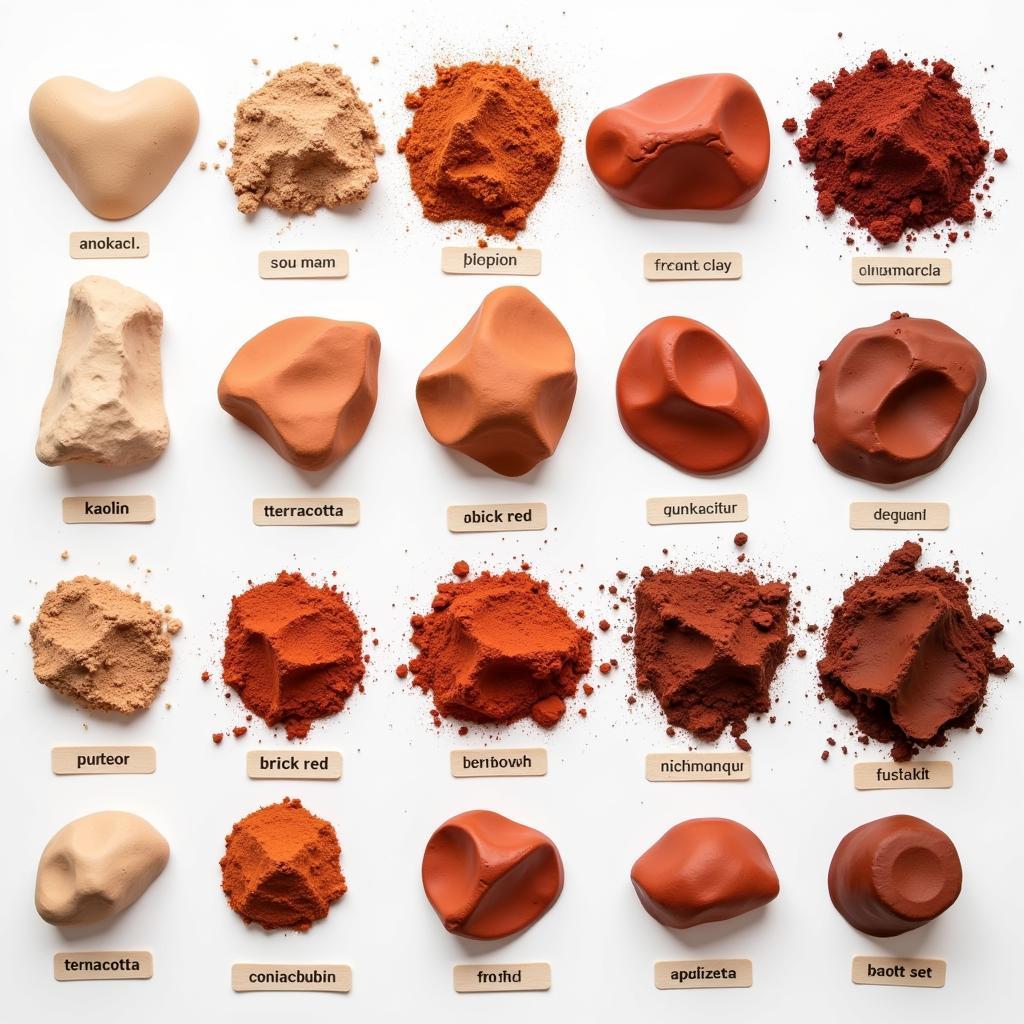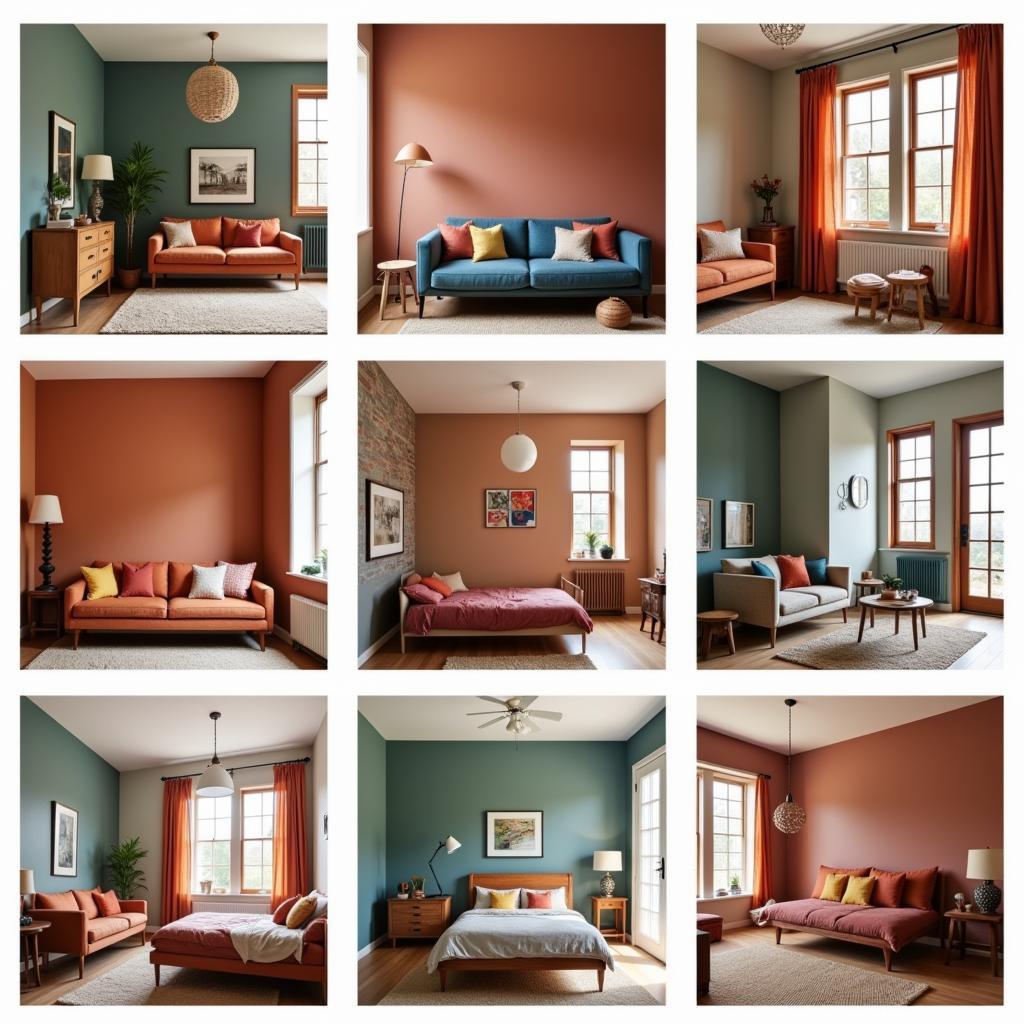Clay evokes a sense of earthiness and natural beauty. But what does the color clay actually look like? It’s not as simple as one might think. The color of clay can range from a pale, creamy off-white to a deep, rich terracotta, and everything in between. Understanding the nuances of this versatile color can open up a world of design possibilities.
 Clay Color Variations in Natural Earthy Tones
Clay Color Variations in Natural Earthy Tones
Decoding the Many Faces of Clay
The color of clay isn’t fixed; it’s a dynamic spectrum influenced by mineral content, firing temperature, and added pigments. Iron oxide, a common component in clay, plays a significant role, contributing warm hues like rust, ochre, and deep browns. Other minerals can introduce hints of gray, green, or even blue. The firing process further transforms the color, with higher temperatures generally resulting in darker, richer tones. Think of what colors are bricks – the deep red is a result of iron oxide in the clay being fired at high temperatures. This makes clay a truly versatile medium, offering a wide range of colors for artists, designers, and builders alike.
The Influence of Minerals and Firing
Different types of clay boast unique mineral compositions, resulting in a beautiful array of natural colors. Kaolin clay, known for its purity, appears as a bright, almost white color. Other clays, rich in iron, exhibit earthy tones like ochre, sienna, and umber. Even within the same clay type, variations in mineral content can create subtle color differences. The firing process acts as a catalyst, intensifying and altering these natural hues. Lower firing temperatures produce lighter, more pastel shades, while higher temperatures unlock deeper, more vibrant tones. This interplay of natural composition and firing temperature allows for endless possibilities in creating specific clay colors.
Clay in Interior Design: A Touch of Nature
Clay’s natural warmth and versatility make it a welcome addition to any interior. From paint colors to terracotta tiles and decorative accents, clay tones can create a grounding, inviting atmosphere. Pair warmer clay hues with natural materials like wood and stone for a rustic aesthetic. Or, opt for lighter clay shades combined with crisp whites and cool grays for a contemporary feel. When choosing paint colors, consider how to make a green color, which can be a refreshing complement to clay’s earthy tones. The possibilities are as diverse as the color of clay itself.
Creating Harmony with Complementary Colors
Clay’s earthy palette pairs beautifully with a range of colors. Greens, blues, and even purples can create a striking contrast while maintaining a balanced, harmonious feel. If you are considering incorporating what is the color of ceres, its grayish-brown hues can harmonize surprisingly well with clay. For a more monochromatic look, layer different shades of clay to create depth and visual interest.
“Clay is more than just a color; it’s a feeling,” says renowned interior designer, Amelia Dubois. “Its connection to the earth brings a sense of warmth and tranquility into any space.”
 Clay-Toned Interior Design Ideas
Clay-Toned Interior Design Ideas
Conclusion: Embracing the Earthy Elegance of Clay
So, what does the color clay look like? It’s a captivating spectrum, reflecting the richness and diversity of the earth itself. From pale creams to deep terracottas, clay offers a versatile palette for any creative endeavor. Whether you’re designing a living space, creating a piece of art, or simply appreciating the beauty of nature, understanding the nuances of clay’s color can unlock a world of possibilities. Considering using clay colors in soap making? You might be interested in can you use food coloring for soap. And if you’re thinking about incorporating terracotta, check out what color goes with terracotta for some inspiring ideas.
FAQ
-
What is the most common clay color? Earthy tones like terracotta, ochre, and brown are most common, due to the presence of iron oxide.
-
Can clay be any color? While natural clay ranges in earth tones, adding pigments and varying firing temperatures can create a wider spectrum of colors.
-
What colors go well with clay? Greens, blues, grays, and other earthy tones complement clay beautifully.
-
How can I incorporate clay colors in my home? Through paint, tiles, textiles, pottery, and other decorative elements.
-
Is clay color trending in interior design? Yes, its natural warmth and versatility make it a popular choice.
Need help with your color choices? Contact us! Phone: 0373298888, Email: [email protected], or visit us at 86 Cầu Giấy, Hà Nội. We have a 24/7 customer service team ready to assist you.

